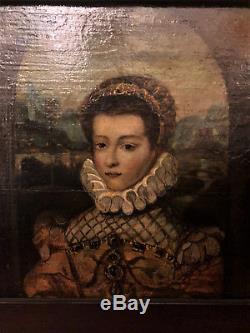
- Home
- Characteristics
- Boxed (2)
- Framed (23)
- Framed, On Canvas (11)
- Framed, On Panel (2)
- Framed, On Wood (37)
- Framed, Signed (4)
- Miniature (3)
- On Canvas (8)
- On Panel (25)
- On Wood (128)
- On Wood, On Canvas (6)
- On Wood, On Panel (15)
- On Wood, Signed (3)
- Signed (13)
- Signed, On Canvas (13)
- Signed, On Panel (10)
- Signed, On Wood (57)
- Other (4641)
- Genre
- Abstrait (59)
- Académisme (57)
- Art Déco (50)
- Barbizon (27)
- Baroque (86)
- Classicism (75)
- Classicisme (225)
- Expressionism (155)
- Expressionnisme (160)
- Fauvism (35)
- Fauvisme (53)
- Impressionism (183)
- Impressionnisme (497)
- Impressionniste (33)
- Orientalisme (74)
- Orientaliste (26)
- Realism (61)
- Renaissance (28)
- Romantisme (116)
- Réalisme (204)
- Other (2797)
- Style
- 1900 Ou Avant (6)
- 1910-1920 (6)
- 1920-1930 (26)
- 1920-1940 (9)
- 20th Century Style (15)
- Art Deco (6)
- Contemporary (7)
- Non-spécifié (59)
- Not Specified (18)
- Unspecified (51)
- École De Barbizon (12)
- 1900 (12)
- 1920 (10)
- 1930 (16)
- 1930-1940 (17)
- 1940 (26)
- 1940-1960 (238)
- 1970 (46)
- 1980 (23)
- 1990 (12)
- Other (4386)
- Theme
- Abstract (7)
- Animals (27)
- Architecture (8)
- Art (2)
- Character (62)
- Child (4)
- Flower, Tree (15)
- Flowers (2)
- Genre Scene (39)
- History, War (5)
- Horse Portrait. (2)
- Hunting, Fishing (5)
- Landscape (306)
- Marine (3)
- Nude (2)
- Nude Woman (2)
- Portrait (9)
- Religion, Mythology (22)
- Seascape, Boat (52)
- Still Life (48)
- Other (4379)
- Thème
- Abstrait (39)
- Animaux (142)
- Architecture (15)
- Character (25)
- Chasse, Pêche (14)
- Enfant (30)
- Fleur, Arbre (40)
- Genre Scene (21)
- Histoire, Guerre (33)
- Landscape (79)
- Marine (36)
- Nature Morte (139)
- Paysage (809)
- Paysage ArborÉ (12)
- Personnage (191)
- Portrait (24)
- Religion, Mythologie (176)
- Scène De Genre (259)
- Seascape, Boat (14)
- Still Life (24)
- Other (2879)
- Type
Henri III And Louise Lorraine Oil On Panel Framed Early Xixth









King and Queen of France Henry iii and louise from Lorraine. Superbly framed and in excellent condition, framed at sight 36 x 21 cm, wooden frame 50 x 35 cm. Louise de lorraine-vaudémont or louise de lorraine (born April 30, 1553 at the castle of nomeny - dead mills on January 29, 1601), is from the branch vaudémont, junior branch of the House of Lorraine. Cousin des Guise and Duke Charles III of Lorraine, she was Queen of France from 1575 to 1589 and Queen of Poland in 1575, following her marriage to Henry III of France. The first cousin of the Duke Charles de Lorraine, she is the first child of Nicolas de Lorraine, Count of Vaudemont and Duke of Mercur, former regent of the duchies, and daisy of Egmont, from a great family of the Netherlands.
She is the eldest of the fourteen children her father had from three successive beds. She is only a year old when her mother dies, egmont daisy. The second wife of her father, Jeanne de Savoie-nemours, shows herself to be a mother-in-law full of attention, which gives her a solid classical education and introduces her to the court of Nancy at the age of ten. The third wife of his father, Catherine de Lorraine-aumale, only three years older than her and perhaps frustrated to have had to marry a man of 26 years older than her and leave the court of France for the town of Nomeny On the other hand, she reveals herself, with a proven malice towards her and her half-brothers and sisters coming from the second bed of her father.
At the age of twenty, tall, blonde with a white complexion, with very light brown eyes, veiled by a slight myopia, the refined and refined figure, louise de lorraine-vaudémont is beautiful, of a delicate and moving beauty. After the murder of her husband by the Dominican jacques Clement, August 1, 1589, louise, desperate, mourns white queens she is veiled in white hence her nickname "white queen". From 1589, she receives the duchy of berry in dower and keeps it until her death. She is therefore working to rehabilitate the memory of her husband, excommunicated by the pope after the assassination of the Cardinal de Guise. On the 6th of September, 1589, barely a month after the death of the king, she asks justice to Henry iv.On October 1, 1589, she undertook steps in Rome to rehabilitate henri iii. On January 20, 1594, during a ceremony at Mantis, the Dowager Queen solemnly solicits the King Henry iv. She lived for 11 years at the Château de Chenonceau, inherited from her mother-in-law Catherine de Medicis.
She installs her room on the second floor, which she covers the walls with black. The decor was rather funereal with the attributes ordinarily reserved for mourning: crosses, shovels and tips of the burial, cornucopia shedding tears.
This black and silver decoration was reproduced on the curtains of the bed and the windows. But this castle being covered with debts and having not itself a huge pension, she bequeathed it to her niece, the only daughter of her brother, who will become Duchess of Vendôme (wife of Caesar de Vendôme, illegitimate son of Henry iv and gabrielle d'estrée). She died at the mill castle on January 29, 1601, and all her property was distributed or used to pay her debts. In September 1603, a papal bull ordered the construction of a convent of nasturtiums in Paris to bury louise of Lorraine, which will be done March 20, 1608. Its remains, found in October 18051, are since 1817 in the crypt of the basilica of saint-denis. She is the only queen before the revolution to actually rest in the tomb bearing her name to saint-denis. Henri III, born September 19, 1551 in fontainebleau and died on August 2, 1589 in saint-cloud, is king of poland under the name of henriier (henryk in Polish) from 1573 to 1575 and king of France from 1574 to 1589 He remains the last king of the Valois dynasty. Fourth son of King Henry II and Queen Catherine of Medici, Henri is not destined for the crown. Under the reign of his brother Charles IX, he distinguished himself as chief of the royal army by winning over the Protestants the battles of Jarnac and Moncontour. At the age of 21, he ran for the vacant Polish throne and on 11 May 1573 he was elected as Henry Walezy, King of Poland and Grand Duke of Lithuania. His reign did not last more than a year, since at the announcement of the death of his brother, died without male descendant, he abandons his kingdom to succeed him on the throne of France. By becoming king of France, he inherited a divided kingdom where his authority was only partially recognized.His reign is marked by serious religious, political and economic problems. Four wars of religion unfold during his reign.
Cloud on August 2, 1589 after being stabbed by the Clementine Monk. Its emblem consists of three crowns symbolizing the kingdoms of France and Poland and a motto that explains the third crown: "manet ultima cælo" ("the last is in heaven"). In particular on his excellence the Duke of Morny. Imperial, including a shirt and tie of the Napoleonic Emperor iii. Other letters addressed to the Duchess de Morny, porcelain of sèvres to the figure of.The Emperor Napoleon III as well as a large selection of historical memorabilia on. The item "henri iii and louise lorraine oil on framed panel early nineteenth" is on sale since Sunday, December 9, 2018. It is in the category "art, antiques \ art of the nineteenth and before \ paintings, enamels". The seller is "ausecondempire" and is located in / in paris. This item can be shipped to the following countries: America, Europe, Asia, Australia.
- type: oil
- genre: classicism
- artistic current: French school
- authenticity: original for sale by the artist
- theme: portrait, self-portrait
- features: box

